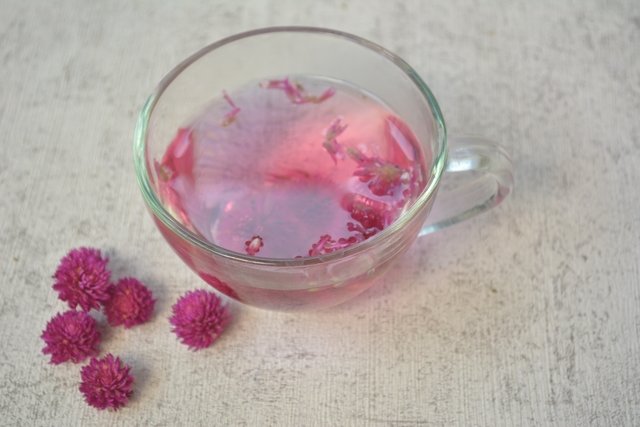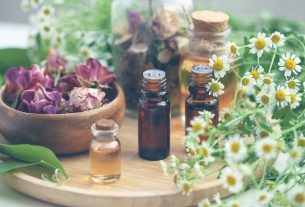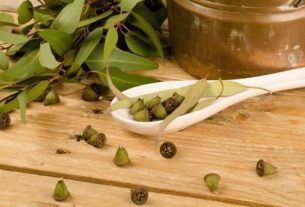Purple perpetual is a medicinal plant that can be recommended to help combat sore throat, hoarseness, cough or asthma, for example, as it is rich in betacyanins, flavonoids, alkaloids and phenolic acids, with anti-inflammatory, analgesic, and antioxidants and antimicrobials.
The normally used parts of the purple perpetual, which is also popularly known as amaranth flower, are the leaves or flowers, from which substances with medicinal properties are extracted for the preparation of tea.
The purple perpetual, of the species Gomphrena globosacan be found in herbalists, health food stores or compounding pharmacies, and should be used with the guidance of a doctor or other health professional who has experience with the use of medicinal plants.

What is it for
Purple Perpetual is normally indicated to help treat some health conditions, such as:
- Sore throat;
- Hoarseness;
- Stuffy nose;
- Cough with phlegm;
- Bronchial asthma and bronchitis;
- Stomachache;
- Hemorrhoid;
- Varicose veins;
- High pressure;
- Kidney changes;
- Diabetes;
- Skin wounds.
In addition, purple perpetual has antimicrobial properties and can be used to help fight infections caused by bacteria, such as Staphylococcus aureus, Escherichia coli, Shigella dysentery e Pseudomonas aeruginosa, for example.
Although it has many benefits, this medicinal plant should not replace medical treatment or be used without guidance from a doctor or herbalist.
How to make tea
The purple perpetual can be used in the form of tea or infusion that must be prepared with the flowers of this plant.
Ingredients
- 4 dried flowers or 10 g of dried purple perpetual flowers;
- 1 liter of water.
Preparation mode
Boil the water, turn off the heat, and add the dried purple perpetual flowers. Cover and let rest for 5 to 7 minutes. Then strain, wait for it to cool, and drink 1 cup of tea, 2 to 3 times a day.
To combat respiratory diseases, the tea can be sweetened with honey, which has moisturizing properties for the throat, and should be consumed while still warm, up to 3 times a day.
Possible side effects
The side effects of Perpetual Purple are not yet known, therefore, its use should only be done with medical advice or from a health professional with experience in medicinal plants.
Who shouldn’t use
Perpetual Purple should not be used by pregnant or breastfeeding women. Furthermore, it should also not be used on children under 12 years of age, as there is no proof of its safety.
Bibliography
- TANG, SR.; et al. Phenolic compounds from Gomphrena globosa L.: phytochemical analysis, antioxidant, antimicrobial, and enzyme inhibitory activities in vitro. CyTA – Journal of Food. 20. 1; 218-227, 2022
- DROBNICKA, N.; et al. Phytochemical Molecules from the Decarboxylation of Gomphrenins in Violet Gomphrena globosa L.—Floral Infusions from Functional Food. Int J Mol Sci. 21. 22; 8834, 2020
- RORIZ, CL; et al. Enhancing the antimicrobial and antifungal activities of a coloring extract agent rich in betacyanins obtained from Gomphrena globosa L. flowers. Food Funct. 9. 12; 6205-6217, 2018
- ESMAT, AU; et al. A review on Gomphrena globosa (L). Int. J. Res. Ayurveda Pharm. 11. 3; 78-84, 2020
- RORIZ, CL; et al. Betacyanins from Gomphrena globosa L. flowers: Incorporation in cookies as natural colouring agents. Food Chemistry. 329. 127178, 2020
- SPÓRNA-KUCAB, A.; et al. Separation of betacyanins from purple flowers of Gomphrena globosa L. by ion-pair high-speed counter-current chromatography. J Chromatogr A. 1489. 51-57, 2017
- RORIZ, CL; et al. Floral parts of Gomphrena globosa L. as a novel alternative source of betacyanins: Optimization of the extraction using response surface methodology. Food Chem. 229. 223-234, 2017

Sign up for our newsletter and stay up to date with exclusive news
that can transform your routine!
Warning: Undefined array key "title" in /home/storelat/public_html/wp-content/plugins/link-whisper-premium/templates/frontend/related-posts.php on line 12
Warning: Undefined array key "title_tag" in /home/storelat/public_html/wp-content/plugins/link-whisper-premium/templates/frontend/related-posts.php on line 13



